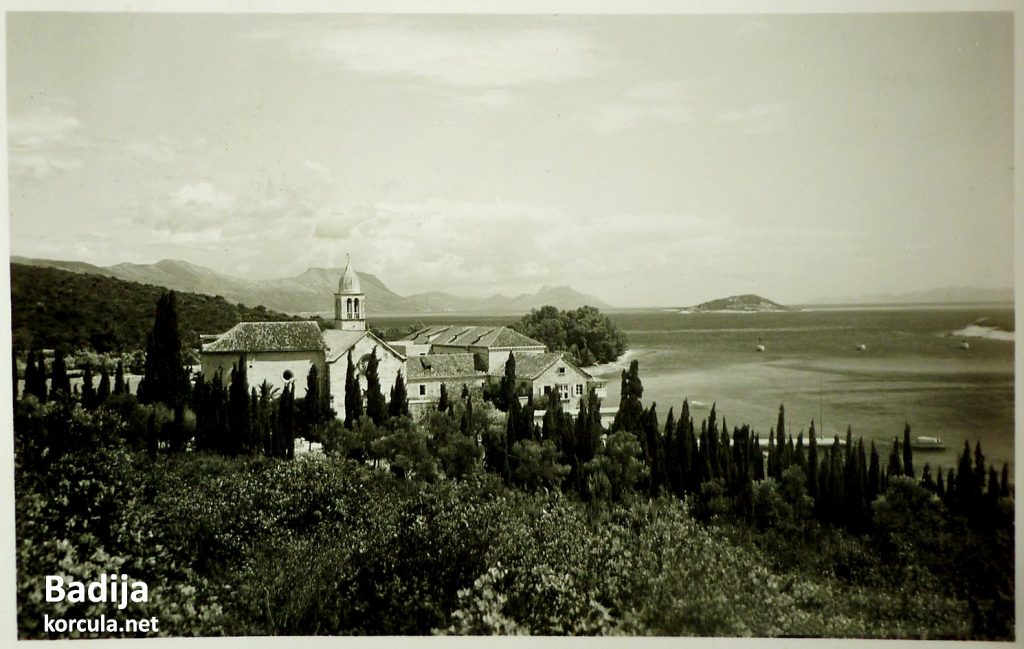History of Badija
Badija was one of the two places around the island of Korčula where prehistoric remains have been found, as testified by the discovery of stone knives from the palaeolithic era. They can be seen today in the Korčula city museum.
Antiquity followed pre-history, as remains of Roman settlements were also discovered on the island. Yet the island’s most constructive period was during its time as a spiritual sanctuary.

Its first written mention as ‘the island of St Peter’ occurs in 1368 in a document written by a Korčulan clergyman Vlaho Ivanovic.
The document describes the presence of a hermit living on the island, which appears to have been some distance away from the island.
With an obvious spiritual dimension of the island being recognized, the 14th century saw a will granted by the Korčulan bishop Ivan of Krk in 1392 that laid the foundations of what we see today. The bishop granted the land for a monastery for friars from the Bosnian diocese.
Two years later, the Korčula municipal council grants the friars the bay on the island and the land around today’s monastery.
In 1398, this privilege was extended to the rest of the island. At the dawn of the 15th century, the island is used as a burial ground, with one of the architects of Korčula’s cathedral Hranić Dragošević being buried outside today’s cloister.
In the 19th century, under various Western European occupational powers, Badija served intermittently as a hospital and a quarantine area, before being given back to the Franciscans after 1815.
Popular Routes: Split to Korcula, Korcula to Split, Dubrovnik to Korcula, Korcula to Dubrovnik
The first decade of the 20th century saw a school open within its grounds that required the building of extra grounds to facilitate this new educational establishment that nurtured future admirals, academics and well-known doctors of medicine.
After the Second World War, the monks were forced to leave the island as it became part of a military complex that remained on Badija until 1956. After this time, the authorities turned it into a sports centre which it remained until 2003 when it was returned to the Franciscan order.
Timeline
1368 – First mention of Badija in a historic document
1392 – The Korčulan authorities grant the land on Badija for use to Franciscan monks
1477 – Cloister completed
1571 – Badija attacked and pillaged by Ottoman fleet (more info)
1660 – Pirates pillage Badija
1806 – The French occupation of Korčula leads to Badija being turned into a military hospital
1813 – The British occupation of Korčula turns the island into quarantine facilities.
1815 – Austrian rule begins, lasting until 1918.
1909 – Establishment of a high school with a focus on classical subjects
1943 – Franciscan order forced to leave the island
1944 – 1956 – Army uses the island as a base
1950 – Badija turned into a sporting complex
2003 – Badija returned to the Franciscan order.
2019 – Opening of an art gallery on the island
